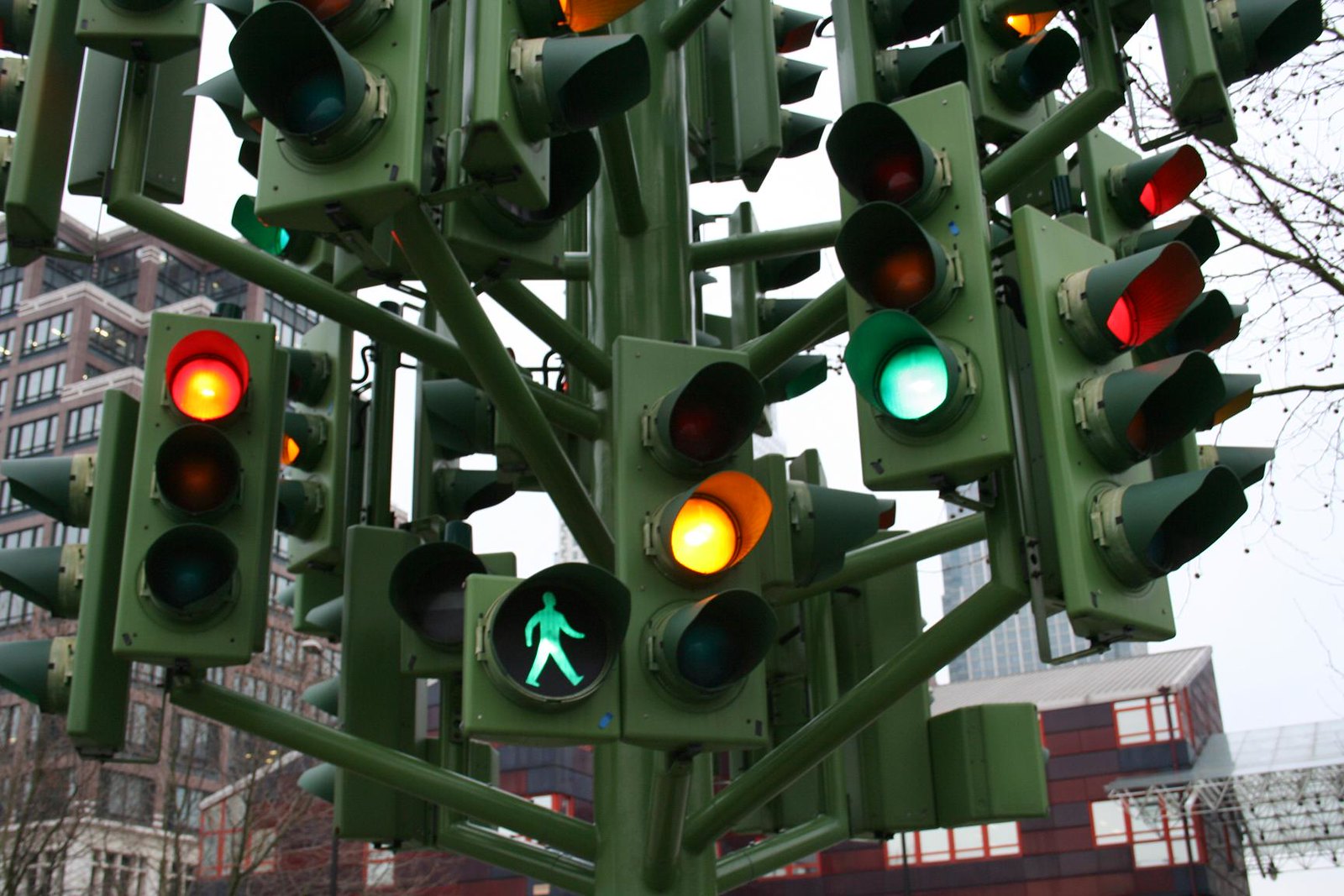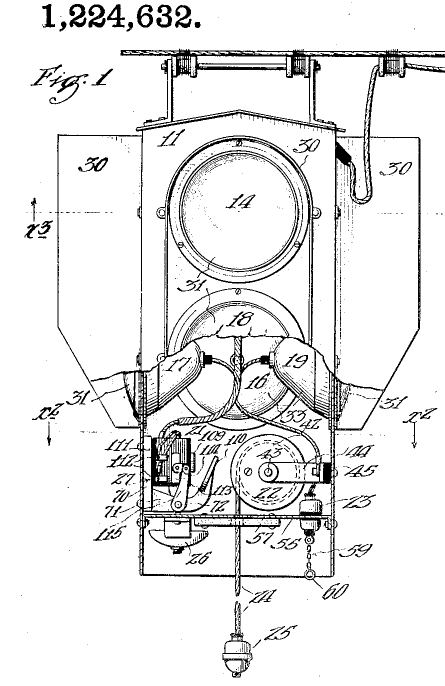Tech In Plain Sight: What Does a Yellow Light Mean? [Hackaday]


The traffic light is a ubiquitous feature of modern life and is quite old — dating back to 1868 London, although that device was a modified railroad semaphore operated by a policeman, but it was the same idea. The initial test of the signal proved disastrous. The semaphore had gas lamps to illuminate the signs in the dark. A gas leak caused one of the lamps to explode, badly burning the operator and ending the nascent invention for a while. In 1910, American inventor Ernest Sirrine worked out an automatically controlled traffic signal. Two years later, Lester Wire, a police officer, developed a different version powered by overhead trolley wires to light the signal. A 1917 patent by William Ghiglieri also had two lights — red and green. But where was the yellow light?
Time To Slow Down
The fundamental problem with the red/green system is that of inertia. Cars can’t stop instantly, and if the side with green starts moving before the side with red stops, they collide. Borrowing from the rail system, the first yellow light appeared when policeman William Potts added it to signals in Detroit in 1920.
Yet another system to include a pause state was invented by Garret Morgan. Morgan was the first African-American to own a car in Cleveland. He also invented several things, including a hair relaxer that came from a solution used to prevent sewing machine needles from overheating, and a firefighter’s safety hood that routed cool air from floor level to the user in 1914. He and his brother would use the hoods to rescue two people trapped underground after a gas explosion in 1916. The Army used these hoods in World War I.
But back to traffic lights, Morgan was driving through Cleveland one day and saw an accident. He noted that the traffic signals of the day would abruptly change from “go” to “stop” and decided a third state would solve the problem. From his patent:
One of the objects of my invention is the provision of a visible indicator which is useful in stopping traffic in all directions before the signal to proceed in any one direction is given. This is advantageous in that vehicles which are partly across the intersecting streets are given time to pass the vehicles which are waiting to travel in a transverse direction; thus avoiding accidents which frequently occur by reason of the over-anxiety of the waiting drivers, to start as soon as the signal to proceed is given.
Morgan’s traffic signal relied on using arms labelled “stop” and “go”, but importantly also included the pause to stop traffic in all directions until the intersection could clear. This “caution period” between go and stop would become a standard for traffic signals of all kinds. Morgan’s invention was cheaper to produce than the Potts design, and he sold the rights to General Electric for a cool $40,000 — quite the sum in those days. The original prototype is in the Smithsonian’s American History Museum.
Like many inventions, there wasn’t a single inventor for the modern device. Charles Adler is another name in traffic light history. In 1928, he perfected a system that allowed drivers to honk to change the light. That would seem to have some problems operationally, but it did serve as a foundation for lights that respond to vehicle traffic. Adler also came up with the pedestrian push button in 1929.
Tech
Then there are all the technical issues the public never thinks about. How do you maximize incandescent bulb life? You derate the bulbs and keep a slight current flowing through them all the time so the filaments stay warm, minimizing thermal shock when you turn them on again. Or, these days, use LEDs. Then again, LEDs don’t melt snow off the lights like the old bulbs did. Of course, you need a wide viewing angle, and there is usually some sort of visor to help prevent the sun from washing out the color.
Then there is control. The original signals were operated by policemen. Automated or timed lights started to appear around 1922. The Crouse Hinds company, based in Houston and known for railroad signals, added timers to Houston traffic lights around that time.
Cities found it enticing to automate lights. New York City, for example, had 6,000 officers working traffic control and, thanks to light automation, reduced that number to 500, saving over $12 million a year. One problem was that drivers thought a human would do a better job controlling traffic. Many thought it was a fad, although, obviously, that wasn’t the case.
Coordinating lights was another issue. Turning all the lights on a major street green seems like a good idea for traffic flow. But in practice, drivers would race to make as many lights as possible, resulting in Philadelphia seeing an increase in accidents after implementing such a system.
The answer was to change the lights in lockstep so that a vehicle going at some speed would, in theory, never have to stop after making one green light. General Electric pioneered this in Washington, D.C., in 1926. Of course, back then, the timing mechanisms to pull this off were finicky. Eventually, computers and sensors would add sophistication to lights. That’s only gotten better with time.
Inertia
One interesting bit of engineering trivia is that the “standard” traffic control signals were not standardized for many years. They did inherit from the railroad system, but — mostly — the people working on traffic control were a tightly knit bunch, and they valued uniformity and not confusing the public. For example, in 1923, there were well under 1,000 traffic lights in the United States. Someone realized that 10% of drivers were color blind, seeing both green and red as a gray color. The proposal to change to yellow and blue was quickly dismissed.
Not that there were no deviations or attempts at deviations. They were just short-lived. Famously, an Irish neighborhood in Syracuse, New York, defaced traffic lights because red on top of green was seen as a symbol of British domination over Ireland. Authorities briefly switched the lights in those areas. China’s Red Guard proposed making lights in that country so that the red light indicated “go,” but the government rejected the proposal. Of course, these days, there are standards at the national and international levels.
Of Course, There’s More
If you want a higher-level history of traffic lights — including the yellow light — check out the video from [The History Guy] below. If you want to know what the yellow light really means, check out the clip from the TV show Taxi below that. Want a peek inside? Then there are always traffic circles.
Featured image: “Traffic Light Tree, Canary Wharf London” by Martin Pearce

![tech-in-plain-sight:-what-does-a-yellow-light-mean?-[hackaday]](https://i0.wp.com/upmytech.com/wp-content/uploads/2023/11/153028-tech-in-plain-sight-what-does-a-yellow-light-mean-hackaday.jpg?resize=800%2C445&ssl=1)